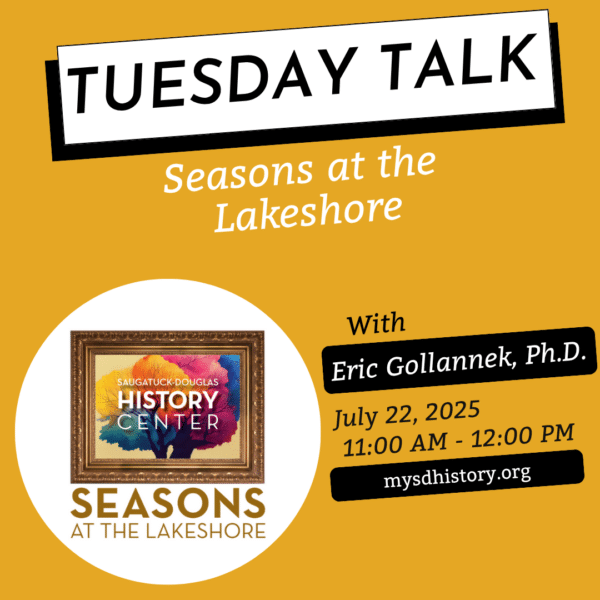

About the Event
Join us for a presentation by Eric Gollannek about the Saugatuck-Douglas History Center’s Lakeshore art exhibit and the artists showcased there. On view since Fall 2024, the art exhibition “Seasons at the Lakeshore” presents more than thirty artworks from the Center’s permanent collection. The artworks on view allow visitors to experience the Lakeshore through the eyes of artists working at the Lakeshore for more than a century.
Come be inspired by the changing seasons—summer, fall, and winter—seen in the forests, dunes, water, and townscapes that make the Lakeshore a scenic and historic place for artists and art lovers. The exhibit showcases a diversity of artworks by artists including Anne Corlett, Peggy Boyce, Robert Fort, Carl Hoerman, Albert Krehbiel, Cora Bliss Taylor, and more. Artworks include oil paintings, pastels, etchings, lithographs, and watercolors. Attendees can view the artworks after the presentation on display in the Center’s first floor exhibit.
Eric Gollannek, PhD, has been the Executive Director at the Saugatuck-Douglas History Center since 2018. He has a PhD in Art History from the University of Delaware. Eric and his family live in Grand Rapids.
Location
The History Center in Downtown Douglas
130 Center St.
Douglas,
MI
49406
United States
